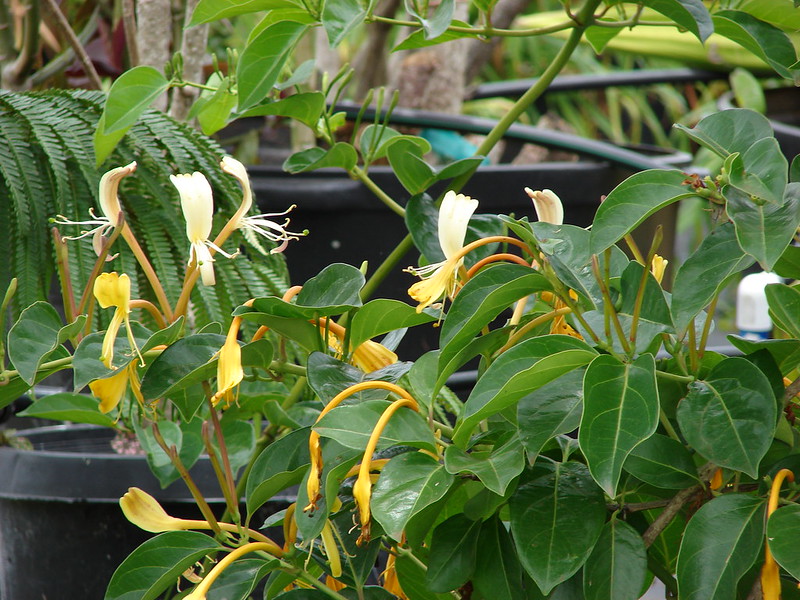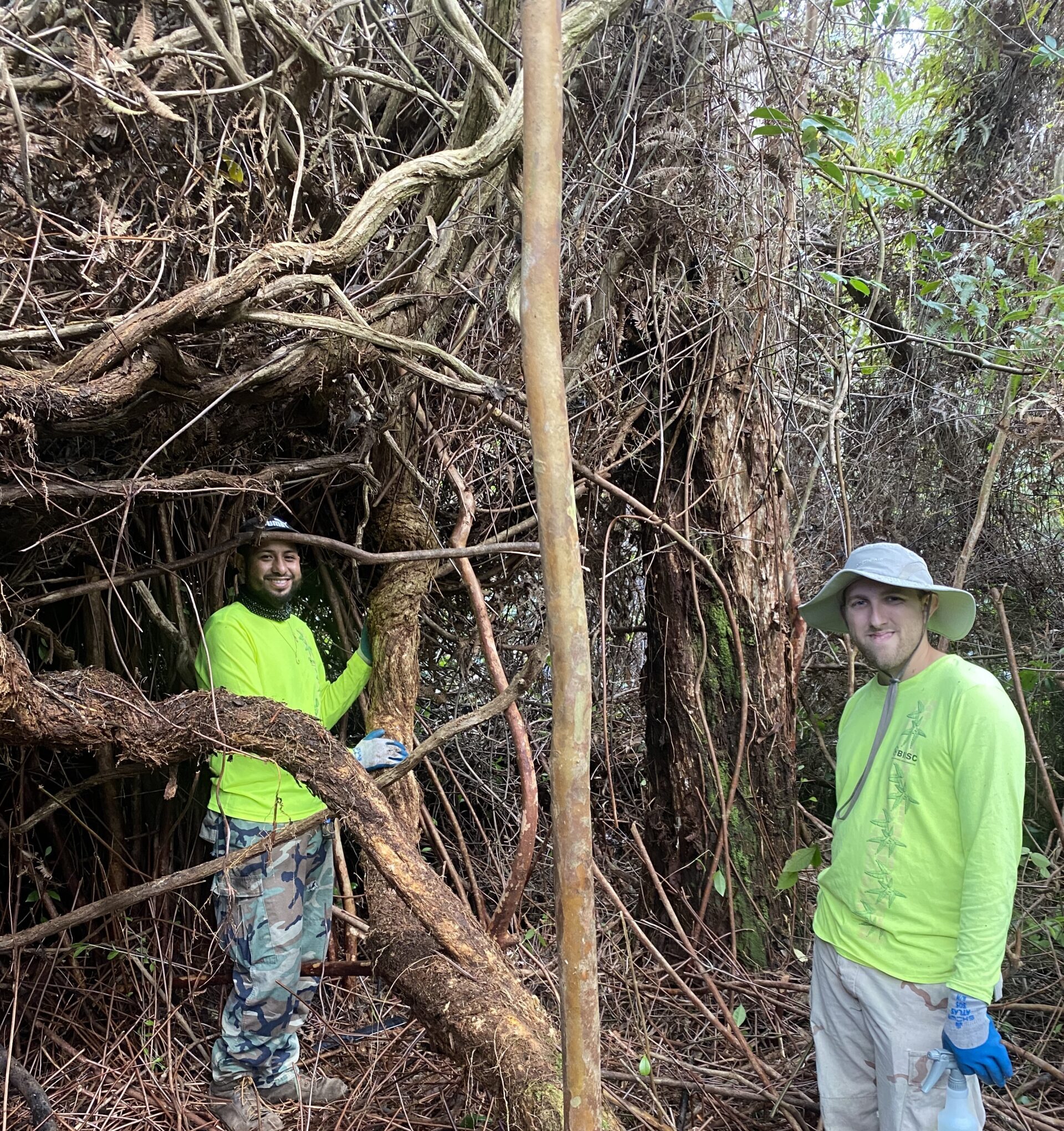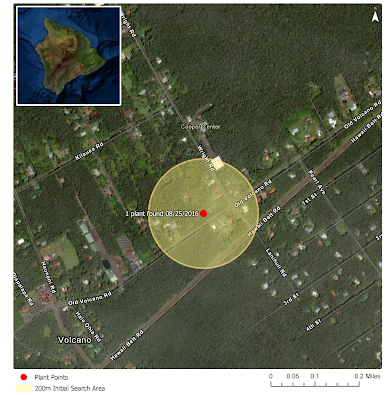
Giant Burmese Honeysuckle
REPORT IF SEEN: Contact BIISC to schedule a free removal
Native to Southeast Asia, Giant Burmese Honeysuckle (Lonicera Hildebrandiana) has been cultivated in Hawaii since 1939. Recently, BIISC staff found a ½ acre densely packed with the rapidly growing vine overtopping several ‛ōhi‛a. It appears to be responsible for some limb breakage and possibly the take-down of a whole tree. Because Rapid ‛Ōhi‛a Death is transmitted through open wounds, this is an alarming situation. Furthermore, the curtain of vines prevents the growth and regeneration of native woody plants, eventually killing them.
Impacts:
- Elevation range exceeds 1000 m, demonstrating environmental versatility
- Thrives in tropical climates
- Described as invasive in southeastern USA
- Tolerates many soil types
- Climbing and smothering growth habit
- Reproduces by seeds and vegetatively by rooting stems
- Seeds dispersed by birds, other fruit-eating animals, and intentionally by people
- Resprouts after cutting or top kill
Description:
- A rapidly growing vine reaching more than 60 ft
- Green leave are oval or ovate and arranged oppositely
- Yellow tubular flowers curve
- After flowering, berries, containing many seeds, are produced
Giant Burmese Honeysuckle (Lonicera hildebrandiana)



Photos (L-R): Forest and Kim Starr, Forest and Kim Starr, BIISC
BIISC’s Control Efforts
Because the infestation is limited, BIISC staff hopes to eradicate this invasive vine in five years.



